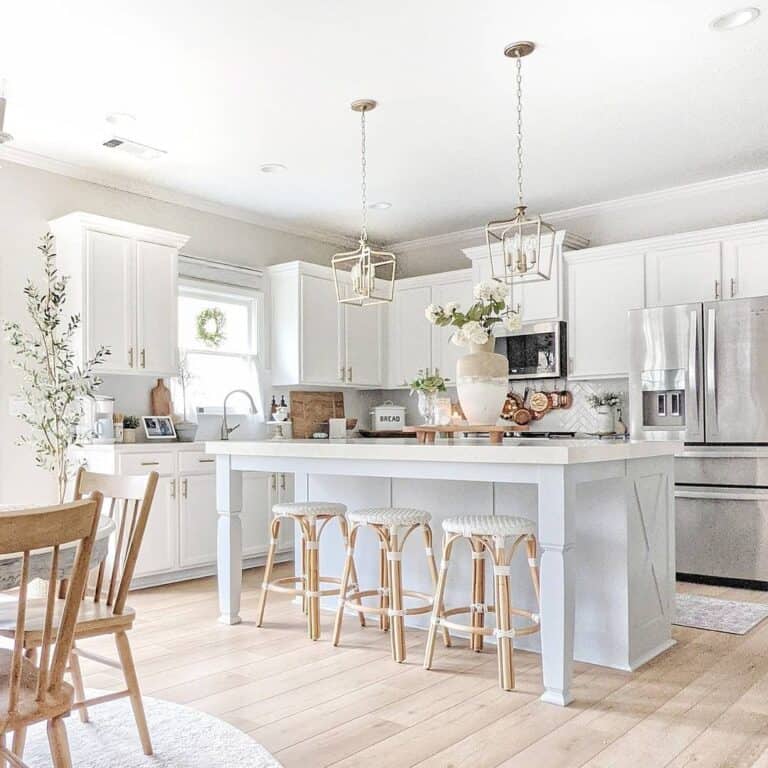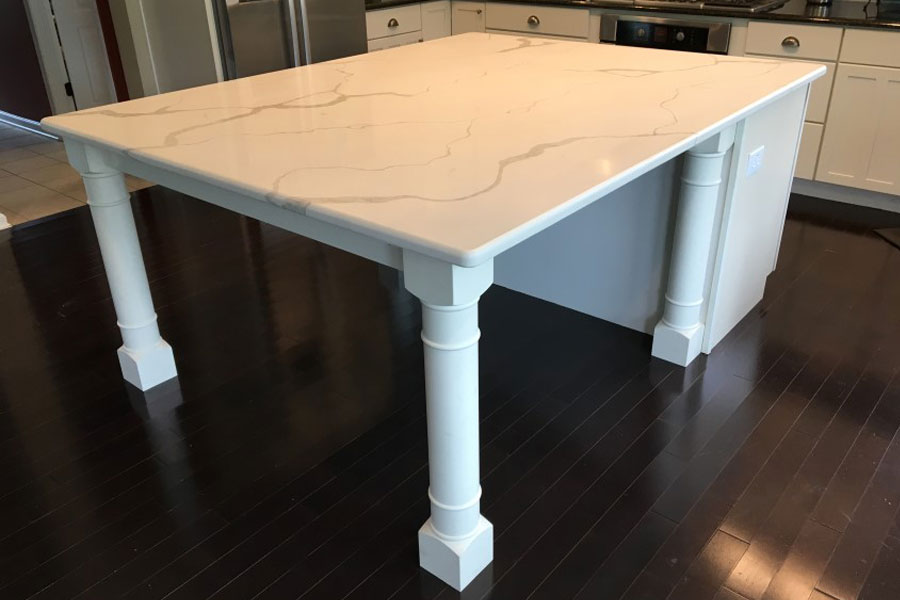Change Your Kitchen with Beautiful Kitchen Island Legs
Change Your Kitchen with Beautiful Kitchen Island Legs
Blog Article
Crucial Tips for Picking the Perfect Table for Your Kitchen Area
Choosing the ideal dining table for your cooking area is even more than just a matter of preference; it demands a detailed understanding of your area and requirements. Begin by measuring your offered area to guarantee ample clearance for activity. The shape of the table plays a critical duty; while rectangle-shaped tables suit bigger locations, rounded ones foster affection, and extendable alternatives provide flexibility. Product option is equally critical, with hardwoods providing durability and glass borrowing a contemporary touch. The table should balance with your kitchen's appearances and fit your family members easily. What various other factors might influence this crucial decision?
Action Your Space
Selecting the optimal dining table begins with a precise evaluation of your offered area. This foundational step makes certain that the table not just fits pleasantly within the area yet additionally enhances the total format and capability of your eating area.
Think about the flow of movement around the table. It is important to leave sufficient space for chairs to be taken out and for individuals to move the table without blockage. A general guideline is to allow a minimum of 36 inches of clearance from the edge of the table to the nearby wall surface or furniture piece. This guarantees convenience of gain access to and comfort during dishes.
Additionally, consider the variety of people you commonly amuse and whether you need additional space for guests. Choosing an extendable table can offer flexibility, enabling you to suit varying varieties of diners. By precisely measuring your area, you lay the foundation for selecting an eating table that enhances both the looks and functionality of your eating location.
Choose the Right Forming

On the other hand, round tables are superb for smaller kitchen areas or intimate celebrations, as they promote discussion by permitting everyone to deal with each various other. They also offer a feeling of coziness and can fit well in tighter spaces because of their absence of sharp corners. Oval tables use the most effective of both worlds, integrating the size of rectangle-shaped tables with the intimacy of round ones, making them flexible for different setups.
Square tables are another option, especially matched for square-shaped areas. They create a symmetrical and contemporary appearance, fostering an equal dining experience for all seated. However, they may be less functional for bigger celebrations unless they feature expansions. Ultimately, the shape you choose ought to line up with your space dimensions and way of life to make sure both type and function.
Material Considerations
When selecting a table, material factors to consider are critical in identifying the table's toughness, maintenance requirements, and overall aesthetic. Timber is a traditional option, providing timeless allure and effectiveness. Hardwoods like walnut, oak, and mahogany are particularly durable, though they can be pricey. kitchen island legs. Softwoods, such as want, are a lot more cost effective however may be vulnerable to scrapes and dents.
Glass-topped tables supply a modern, streamlined look and can make an area appear bigger due to their openness. They need constant cleaning to protect against fingerprints and spots. In addition, tempered glass is suggested for its added stamina and safety and security.

Lastly, composite products like MDF (Medium-Density Fiberboard) or plywood are budget-friendly choices. These materials can mimic the look of solid wood yet may not supply the exact next same longevity. They are usually much easier to clean yet can be prone to water damage otherwise correctly secured.
Eventually, the choice of product ought to align with your kitchen area's style, your way of living needs, and your spending plan restrictions. (kitchen island legs)
Seats Capacity and Convenience
Just how do you figure out the ideal seating capability and convenience for your eating table? For a family of four, a rectangular table of 48 inches long or a round table with a 48-inch diameter is normally enough.
Comfort is equally necessary. The elevation of the table need to ideally be around 30 inches, providing a balanced ergonomic stance for seated diners. Chairs ought to sit elevation of 18 to 20 inches to make certain a comfy eating stance. Additionally, consider the chair design; upholstered seats and supportive backrests can enhance dining comfort considerably, especially during prolonged meals.
Design and Aesthetics
Selecting a table that matches your design and aesthetic appeal includes balancing individual preference with the existing decoration of your dining space. The eating table is usually the focal point look at here now of the kitchen area, and its style should enhance the total style of the room. Whether your kitchen flaunts a contemporary, minimalist appearance or a rustic, farmhouse appeal, the table you choose need to integrate with these aspects to create a natural and inviting atmosphere.
Take into consideration materials thoroughly; timber uses a timeless allure and can vary from rich mahogany for a typical seek to lighter oak for a contemporary feeling. Metal and glass tables, on the various other hand, can introduce a streamlined, industrial side to your kitchen area. Do not ignore the table's shape-- rectangle-shaped tables are traditional and versatile, while round and oblong options can cultivate a more intimate eating experience.
Additionally, pay very close attention to details and surfaces. A troubled surface could add character and heat, whereas a glossy surface area can add to a tidy, modern aesthetic. Inevitably, your dining table need to not only in shape seamlessly into your cooking area's style yet also show your individual style, raising the room both functionally and visually.
Final Thought
To conclude, selecting the suitable see here now table for a kitchen area demands mindful assessment of area, form, product, seating capacity, and aesthetic consistency. Making certain a minimum clearance of 36 inches helps with comfy activity, while the choice of shape improves spatial dynamics. Product option influences resilience and style, making it critical to align with the kitchen's general visual. Inevitably, an appropriate table fosters a welcoming atmosphere and fits the family easily, hence boosting the eating experience.

When choosing a dining table, product factors to consider are paramount in identifying the table's longevity, maintenance needs, and general aesthetic. For a household of 4, a rectangle-shaped table of 48 inches long or a round table with a 48-inch size is usually sufficient.
Don't neglect the table's shape-- rectangle-shaped tables are timeless and functional, while round and oblong options can foster a more intimate dining experience. kitchen island legs.
Report this page